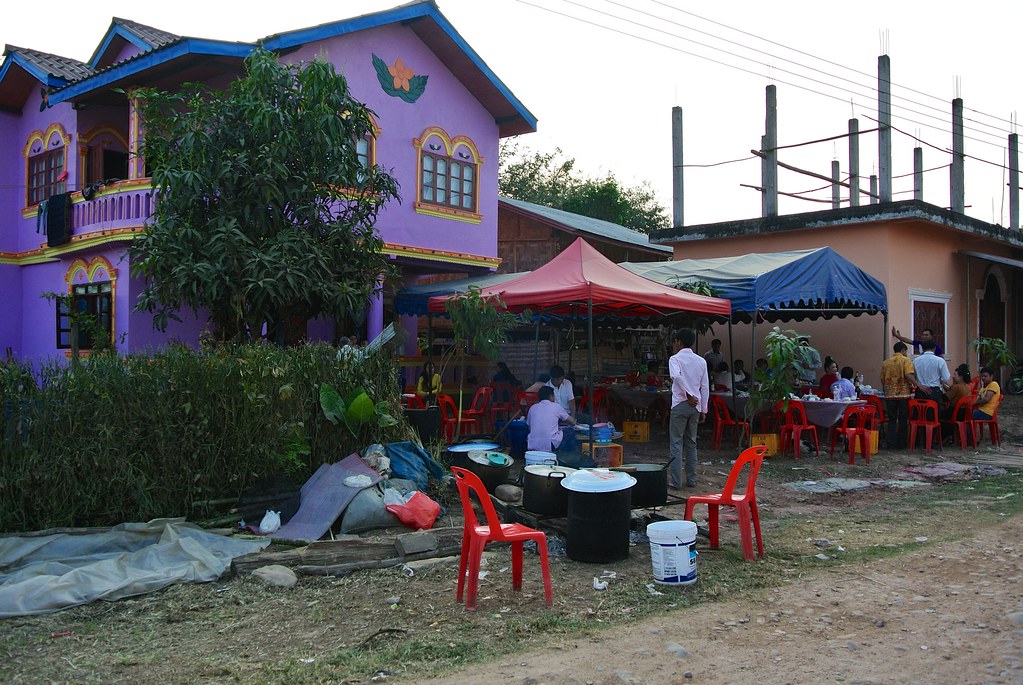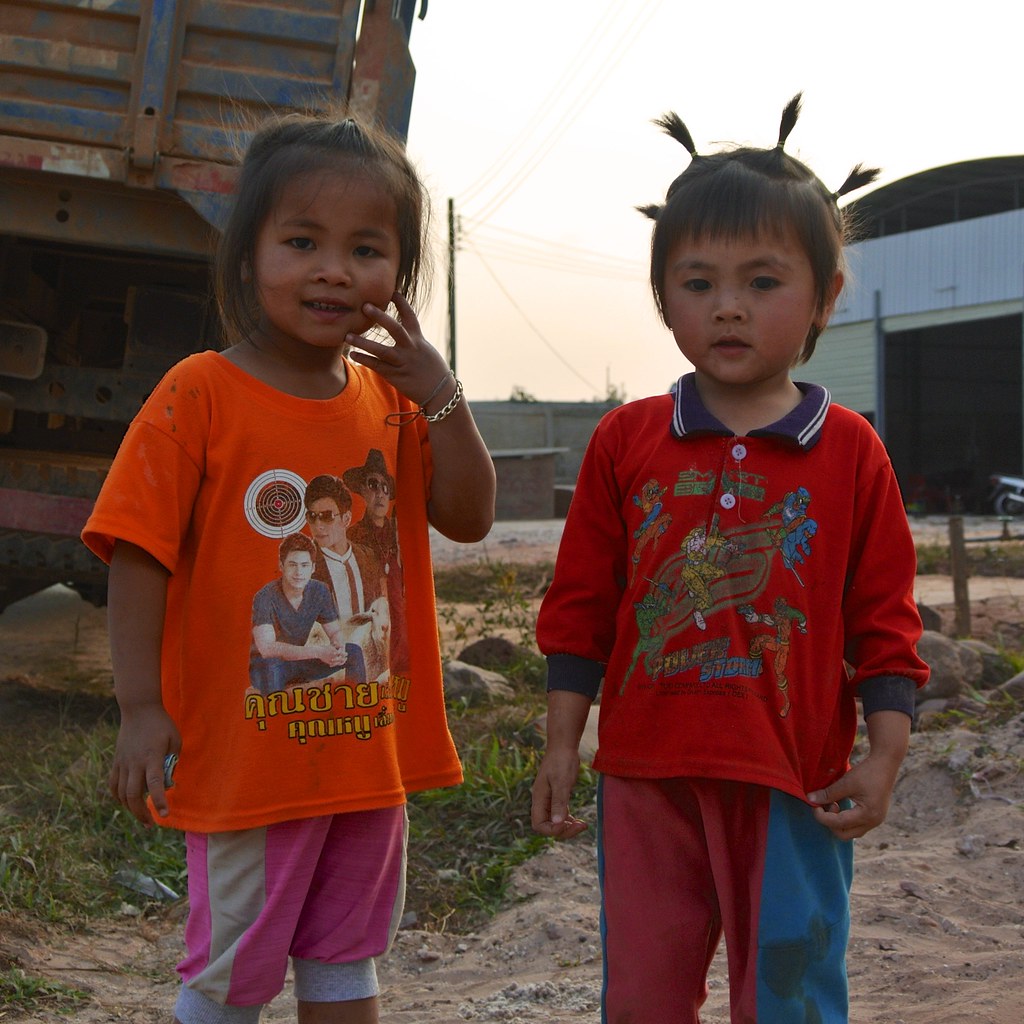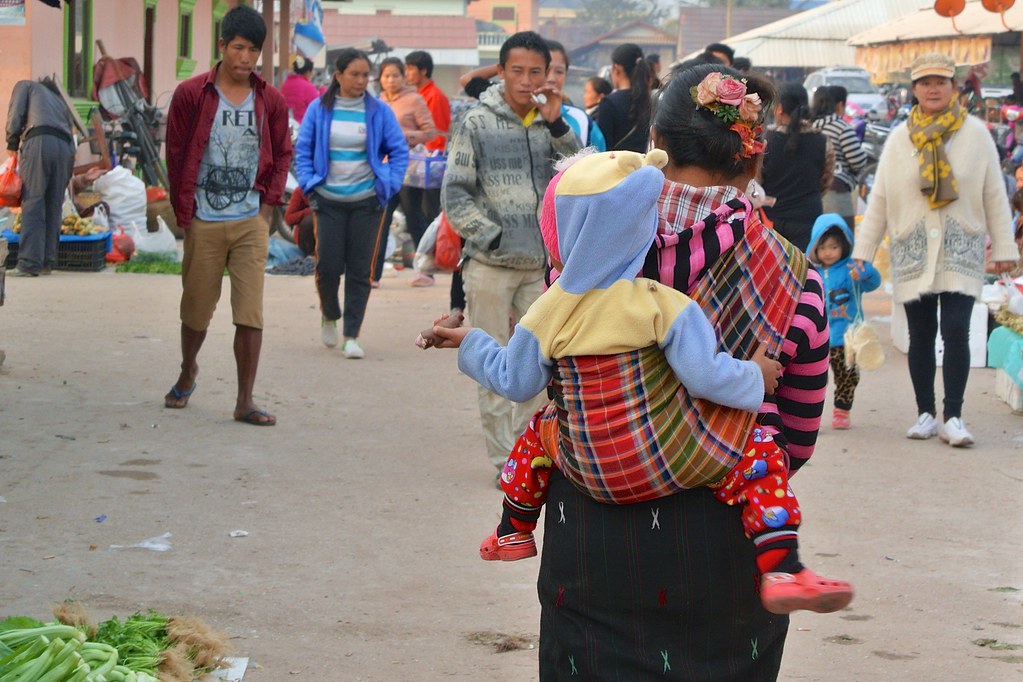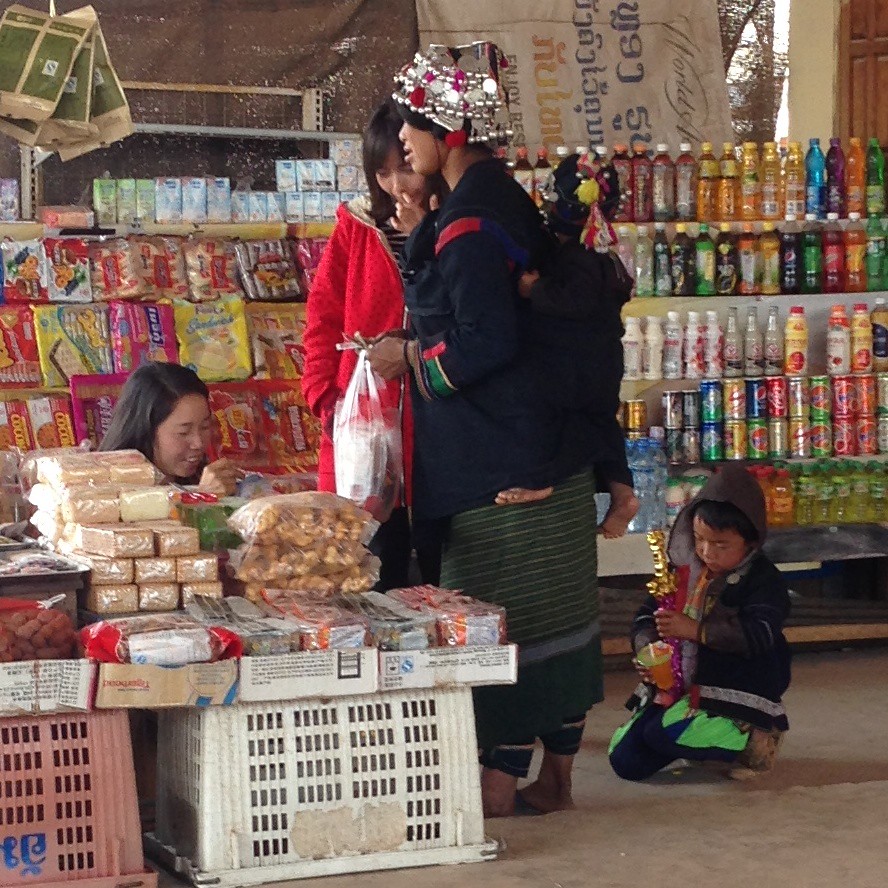North of Luang Namtha is the small town of Muang Sing. I went here mostly to see the famed morning market but as I arrived around 2pm I had time to see some of the town before stopping overnight. It was my first experience of Lao roads off the main highway too, a 2.5 hour ride on a very bumpy and beaten-up road. As with all busses in Laos it’s important to arrive at the station an hour before departure or you’ll risk the bus having been filled and left. I missed two busses and sat around in different stations for four hours before figuring that one out!
Tourism in the town has been on a steady decline for a while and things haven’t got any better since my guidebook was published in 2011. At least three places in the book are no longer open and quite a few others were closed for long parts of the day, seemingly open at random times (including the tourism office!).
After having lunch with a German couple I’d met a few days earlier on the bus from the border (funny how you bump into the same people) I went for a walk of the town. At one point I headed in the direction of some music and found a party of some sort outside a house. I’d barely got near it when I was promptly grasped by the arm, put in a chair and handed a beer. I managed to answer a few questions (the usual where have you been, where are you going) and had pictures taken with what felt like half the family. I stood up to take a picture of my own and managed to escape shortly after.


Though everyone in Laos has been friendly it was definitely a step up in Muang Sing. Most people would say Sabai-di while passing or shout it from a shop front or home. One young boy even managed a Good Morning!.

Some friendly (smaller) locals.
The morning market was worth the trip and as promised, there were noticeable differences in ethnic groups and traditional dress (warm noodle soup at 6am on a chilly morning didn’t hurt either). My favourite sight was the many children in slings hanging from their mothers' backs.

Child sling (above). Akha lady with elaborate headdress (below).

One final sight just before boarding the bus back to Luang Namtha was an Akha lady and child. The Akha people make up around 50% of the population in Muang Sing but this headdress in particular was stunning (above). Each headdress is decorated by their owner and this one made heavy use of silver coins, one of which I saw was from 1902.
According to the Hilltribe Museum in Chiang Rai there are unfortunatlly collectors in the West that pay up to $3000 for a headdress, though they are probably worth far more, both financially and sentimentally.
More photos on Flickr.